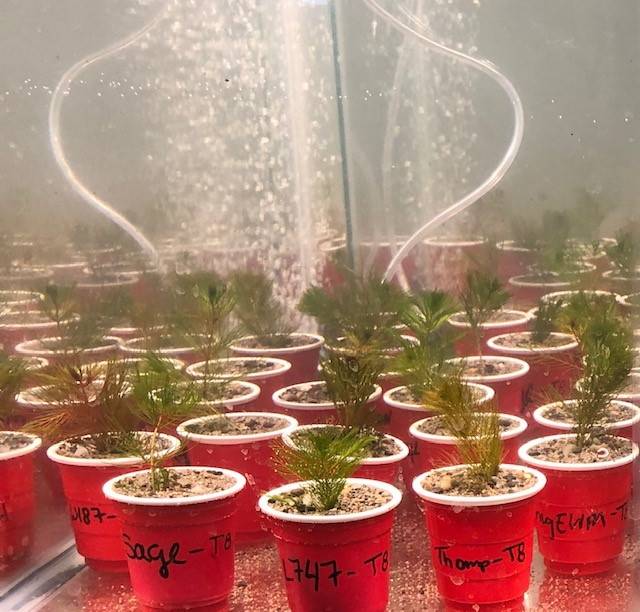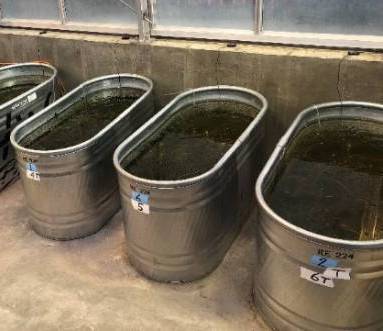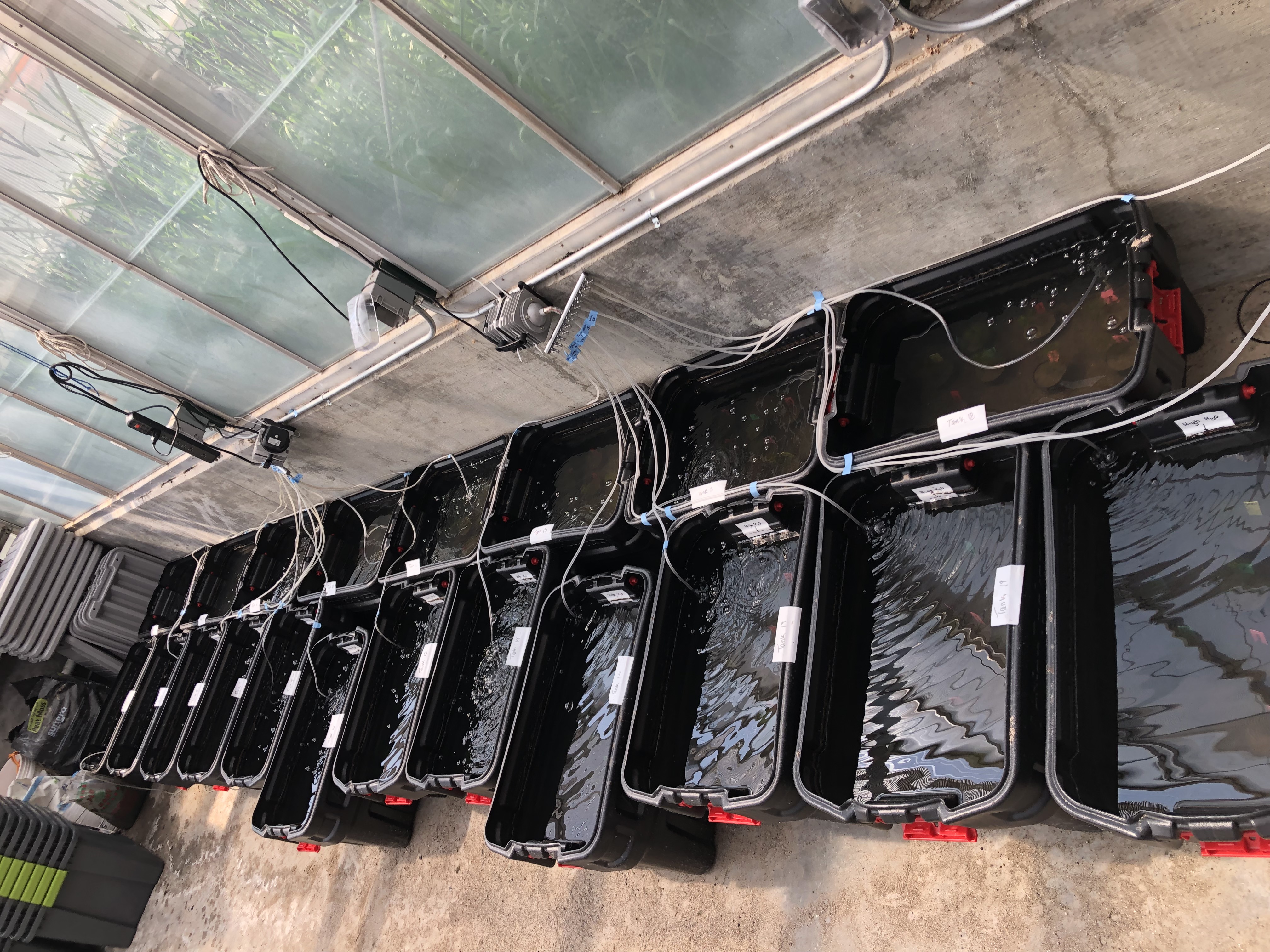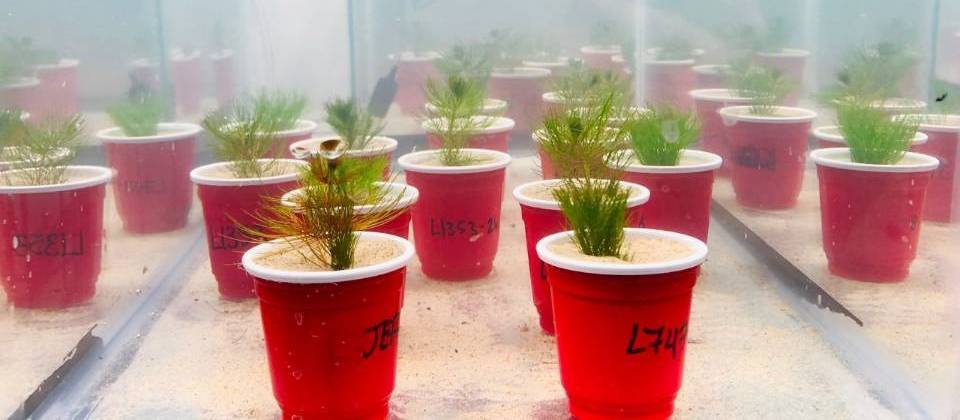Research
The lab’s general academic interest broadly encompasses evolutionary and molecular ecology. The research program is rooted in conceptual evolutionary ecology, but aims to contribute knowledge to guide practical decision making and solutions regarding the pressing and complex problems that invasive species pose.
Managers and policy makers make difficult decisions in the face of considerable uncertainty regarding when and where invasive species will establish and have negative environmental, economic, or human health impacts. In addition, they must make difficult decisions about how best to control invasive species while minimizing unintended environmental and human health impacts. A goal of my research program is therefore to conduct rigorous scientific research that facilitates a predictive understanding of invasiveness that fosters the development of best management practices.
My specific research program focuses on the genetics and ecology of invasive aquatic plants. Invasive aquatic plants can impair water body uses and ecosystem services/functions in a variety of ways, and are estimated to cause billions of dollars of damage annually. Invasive aquatic plants are therefore commonly managed, and the direct cost of aquatic weed management are estimated to be well over $100 million annually.
The current organizing framework for the laboratory is that genetic variation can influence the outcome of specific management strategies or control tactics for invasive aquatic plants. Thus, management practices can influence the evolution of target populations, and evolution of target populations in turn can influence the outcome of management. In the worst cases (from a manager’s perspective), populations with high proportions of resistant genotypes can render an otherwise valuable management tool – such as a specific, routinely-used herbicide - ineffective.
Three overarching conceptual questions in my research program are:
- How common is herbicide resistance evolution in aquatic plants?
- What factors promote or prevent the evolution of resistance, and how common are these factors manifest in aquatic habitats?
- How predictable is herbicide resistance evolution, at both the level of the phenotype and the genotype? Do genotypes with similar levels of resistance to an herbicide use the same or different genetic mechanisms?
While most of the current research in the lab comes to bear on these central questions, many of the current laboratory projects aim towards developing tools that can assist managers in predicting herbicide response for specific populations. In the short term, this involves integrating population genetic surveys and monitoring with lab and field studies of herbicide response. In the long term, this involves identifying the genetic architecture of herbicide resistance so that specific genetic markers can be used to predict management response of target populations.
Projects in the lab utilize a variety of methodological approaches, including controlled laboratory experiments, observational and experimental field studies, and molecular and population genetics and genomics studies. While the above approaches are the wheelhouse of the lab, lab members are encouraged to identify and learn the methodological approaches that will best translate their conceptual frameworks to empirical datasets. Most projects focus on Eurasian watermilfoil, but the lab studies several species, and incoming students are encouraged to judiciously explore systems that are well-suited to their interests.
Specific projects and approaches include:
Population genetic surveys and monitoring
The lab uses molecular population genetics to ask basic questions about genetic diversity across space and time, with a particular emphasis on hybridization as a source of genetic diversity. As a practical tool, the lab uses population genetics to identify signatures of possible herbicide resistance. Possible signatures include: a significant increase in relative frequency of a genotype (for clonal organisms) or allele (for sexual organisms) following herbicide treatment, or dominant and shared genotypes (clones) across managed populations.
Herbicide resistance trials
We use these studies to test whether specific genotypes are susceptible versus resistant to specific herbicide treatments. In addition, these trials help identify specific genotypes to use in genetic crossing studies to identify the genetic architecture of herbicide response.



Perform herbicide trials in serval experimental units. Here we used aquariums, cattle tanks and totes.
Genomics
We are currently collaborating with Dr. Josh Cuperus and Dr. Alex Harkess to sequence, assemble, and annotate the Eurasian watermilfoil genome. This reference genome will facilitate read mapping for RNA-Seq and SNP-based studies. The genome is challenging because Eurasian watermilfoil is a hexaploid.
We are also developing SNP-based genotyping methods (GBS, microhaplotyping) that are more powerful than the microsatellite-based methods that we have used for the past several years.
Finally, we are also using RNA-Seq to compare changes in gene expression across genotypes to identify candidate genes that may influence the variation in herbicide response.

